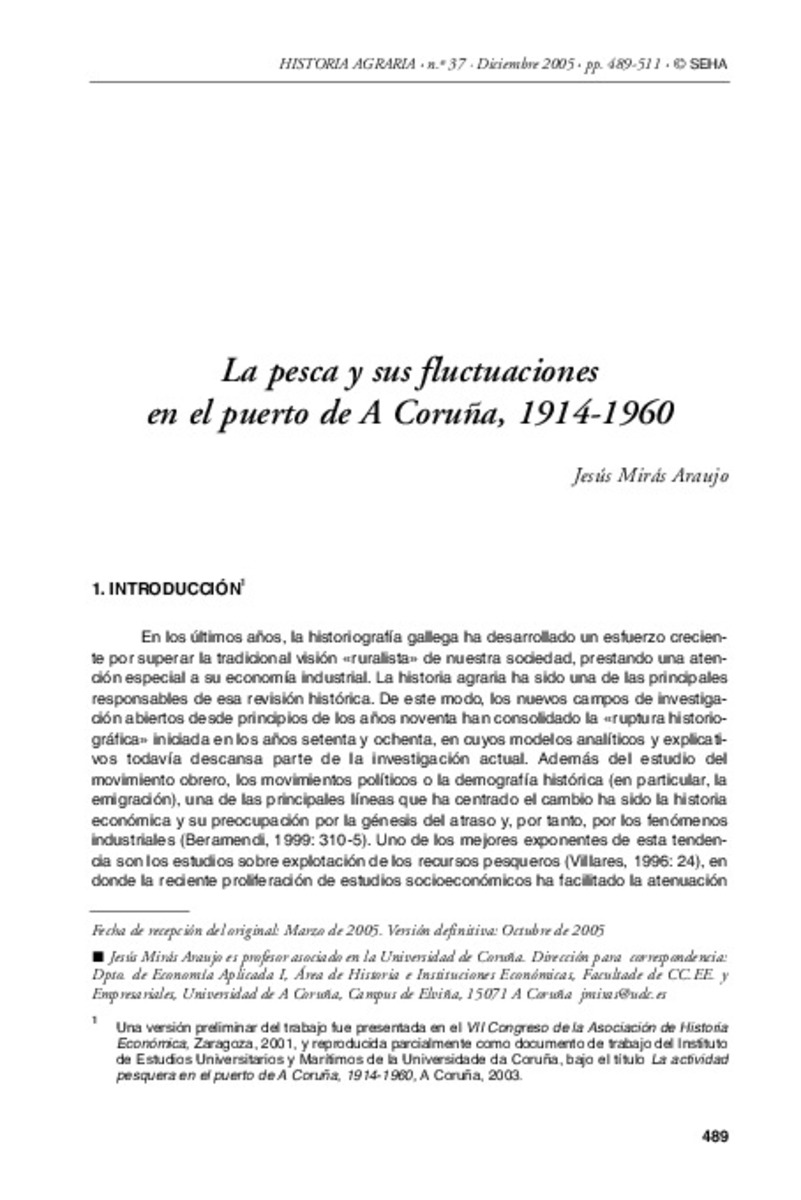Mostrar el registro sencillo del ítem
La pesca y sus fluctuaciones en el puerto de A Coruña, 1914-1960
| dc.contributor.author | Mirás Araujo, Jesús | |
| dc.date.accessioned | 2016-07-12T10:05:05Z | |
| dc.date.available | 2016-07-12T10:05:05Z | |
| dc.date.issued | 2005-12 | |
| dc.identifier.issn | 1139-1472 | |
| dc.identifier.uri | http://hdl.handle.net/10234/161633 | |
| dc.description.abstract | This article aims to analyse the evolution of the fishing activity in the port of A Coruña during a period of transition between the traditional fishing model of the late nineteenth century, and the capitalist model of the second half of the twentieth century, tracing the main stages and the factors that determined the fishing captures. In order to do this, I have mainly used the reports of the port authority, as well as the data collected by the so-called contribución de utilidades de la riqueza mobiliaria, which has led to calculate the results of the most outstanding town fishing entrepreneurs. We have observed that A Coruña became one of the most important national fishing ports, though the evolution of the local fleet and the fishing captures was distorted by frequent and accentuated fluctuations, which affected both this activity and the Iinked urban economic sectors. | ca_CA |
| dc.format.extent | 23 p. | ca_CA |
| dc.format.mimetype | application/pdf | ca_CA |
| dc.language.iso | spa | ca_CA |
| dc.publisher | Sociedad Española de Historia Agraria (SEHA) | ca_CA |
| dc.relation.isPartOf | Historia agraria: Revista de agricultura e historia rural, n. 37, p. 489-511 | ca_CA |
| dc.rights | © SEHA | ca_CA |
| dc.rights.uri | http://rightsstatements.org/vocab/InC/1.0/ | * |
| dc.subject | fishing industry | ca_CA |
| dc.subject | Industria pesquera | ca_CA |
| dc.subject | Pesca | ca_CA |
| dc.subject | A Coruña | ca_CA |
| dc.subject | Galicia | ca_CA |
| dc.title | La pesca y sus fluctuaciones en el puerto de A Coruña, 1914-1960 | ca_CA |
| dc.type | info:eu-repo/semantics/article | ca_CA |
| dc.rights.accessRights | info:eu-repo/semantics/openAccess | ca_CA |







